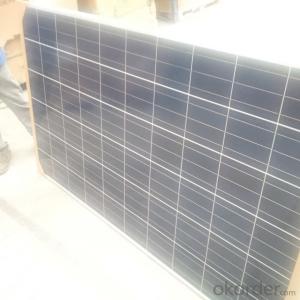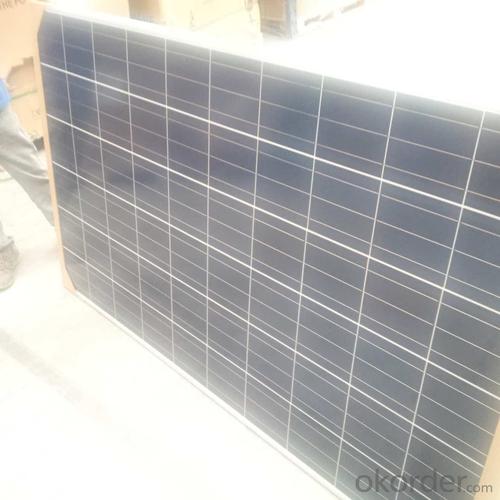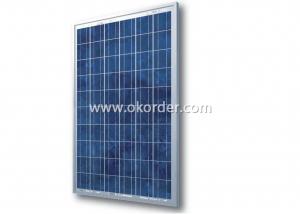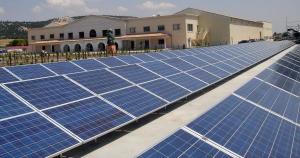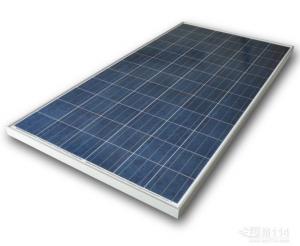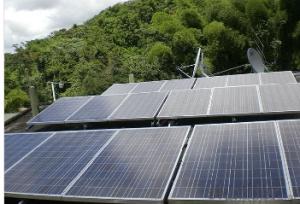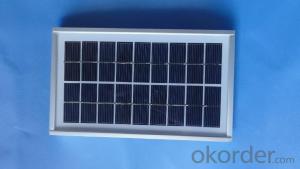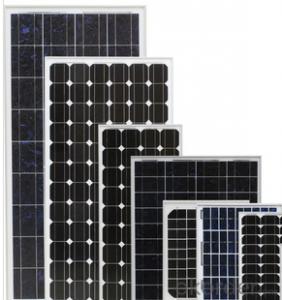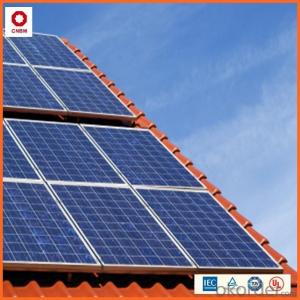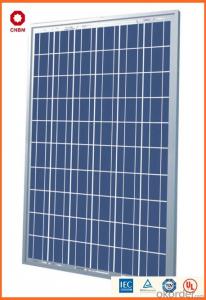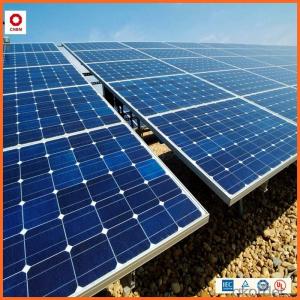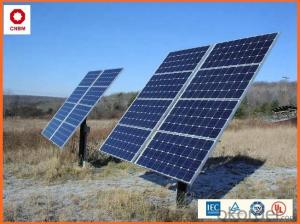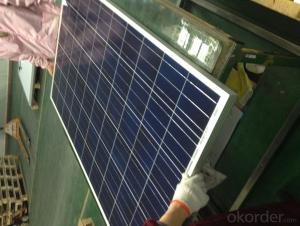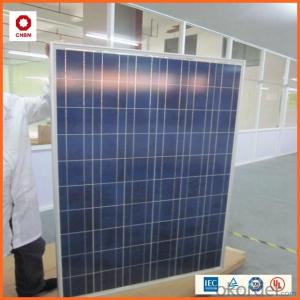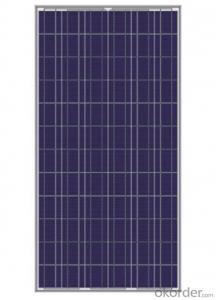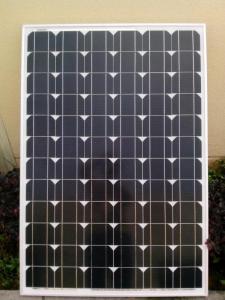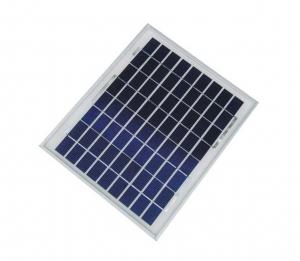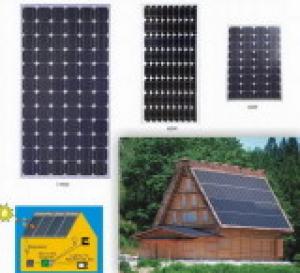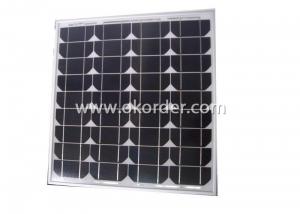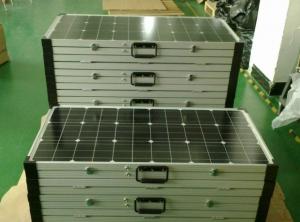Solar Panels Columbus:1MW Poly 240W Panels Stock with a Low Price Hot Sale
- Loading Port:
- China main port
- Payment Terms:
- TT OR LC
- Min Order Qty:
- 2 watt
- Supply Capability:
- 100000000 watt/month
OKorder Service Pledge
OKorder Financial Service
You Might Also Like
Specification
Description:
CNBM Solar is a world-leading and Vertical integrated manufacturer ofhigh-performance with Silicon,
Wafer, Cells, Modules, which convertsunlight into electricity for residential, commercial, and utility-scale
power generation.
The capacity of CNBMSolar is reach to 1GW, andmake sure each year our shipment capacity is more
Than 700-800MWs, at the same time, wehave set up the largest solar power station with our partner
in Ukraine.
We once exported to Ukraine for many big projects ,but because of Ukraine war ,we left 1 MW stocks of
poly 240w solar panels . These panels are grade A , 25 years warranty . Price is very low .
CNBM is a Quality + Service orientedcompany with“Excellence at Each Step” approach, composed of
the finest components from TUV andIEC-certified partners around the world, CNBM modules consistently
undergo a variety of trials at thecompany’s Test & Development Centre, ensuring peak performance
capabilities.
Data:
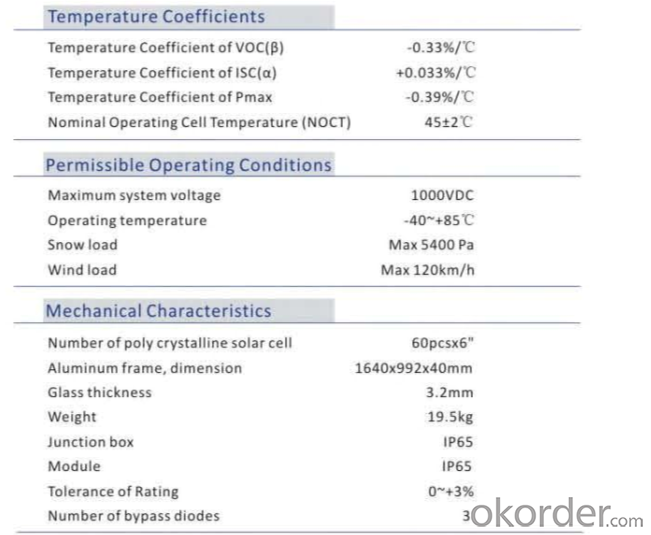
FAQ:What's your products warranty?
12 yrs free from defects in materials and workmanship /No less than 90% within 10yrs and no less than 80% within 25yrs
- Q: Can solar panels be installed on sports stadiums or arenas?
- Yes, solar panels can be installed on sports stadiums or arenas. Many stadiums and arenas around the world have already installed solar panels to generate clean energy and reduce their carbon footprint. These panels are typically placed on the rooftops or parking lots surrounding the facility, taking advantage of the ample space available. Additionally, some stadiums have even incorporated solar panels into their architectural design, creating visually appealing and functional structures.
- Q: Can solar panels be used in areas with high levels of dust storms?
- Yes, solar panels can be used in areas with high levels of dust storms. However, it is important to regularly clean and maintain the panels to ensure optimal performance. Dust storms may temporarily reduce the efficiency of solar panels, but with proper care and regular cleaning, they can continue to generate electricity effectively.
- Q: Can solar panels be installed on swimming pools?
- Yes, solar panels can be installed on swimming pools to harness the sun's energy and heat the water. These panels, often called solar pool heaters, are specifically designed to capture solar energy and transfer it to the pool water, providing an energy-efficient and cost-effective way to maintain a comfortable swimming temperature.
- Q: my solar panel is 5v 50 mA, and im making iphone USB charger so i need to connect + with 00 ohm resister and to data - and + so what resister will be okay..?
- Just connect the 5 volts out of the panel directly to the iphone via an USB connector. BUT, is the panel output always 5 volts, ±0.25 volts? Because that is the USB specification, and anything outside of those values could damage your iphone. And solar panels are known for their wide swings in voltage. Bottom line, resistor not needed, and you need to be positive you supply the correct voltage to the iphone. Best way to do that is to start with a solar panel that puts out at least 7 volts and use a LM7805 regulator. The only resistors needed are those to tie the data lines into a certain combination of resistance and voltage so that the iphone is fooled into thinking that a proper USB is connected. That would NOT involve a 00 ohm resistor. Search online for the proper values and connections. edit: are you repeating your same inane question with a different account? That is totally against the rules and could get you suspended.
- Q: Can solar panels be used for powering outdoor lighting?
- Yes, solar panels can be used to power outdoor lighting. Solar panels absorb sunlight and convert it into electricity that can be stored in batteries. This stored energy can then be used to power outdoor lights, making them a sustainable and cost-effective option for outdoor lighting.
- Q: Solar panels are expensive,can I make my own solar panel?
- If you're thinking of solar electric, unfortunately, it's not cost-effective to make your own panel. Be especially wary of scams like Earth4Energy that claim you can do it cheaply and effectively. If it was so easy, you'd see at least a few people in your neighborhood doing it.
- Q: How do solar panels affect satellite dish reception?
- Solar panels can potentially interfere with satellite dish reception if they obstruct the line of sight between the dish and the satellite. However, modern satellite technology and proper positioning of both the panels and the dish can often mitigate any negative impact on reception.
- Q: What is the lifespan of solar panel batteries?
- The lifespan of solar panel batteries can vary depending on various factors such as the type and quality of the battery, usage patterns, and maintenance. On average, solar panel batteries generally last between 5 to 15 years. However, with proper care and regular maintenance, some high-quality batteries can last up to 20 years or more.
- Q: Can solar panels be used in areas with limited access to electricity?
- Yes, solar panels can be used in areas with limited access to electricity. Solar panels convert sunlight into electricity, making them a suitable and sustainable solution for generating power in remote locations or areas without a reliable electricity grid. They can provide clean and renewable energy, helping to meet the electricity needs of communities with limited access to traditional power sources.
Send your message to us
Solar Panels Columbus:1MW Poly 240W Panels Stock with a Low Price Hot Sale
- Loading Port:
- China main port
- Payment Terms:
- TT OR LC
- Min Order Qty:
- 2 watt
- Supply Capability:
- 100000000 watt/month
OKorder Service Pledge
OKorder Financial Service
Similar products
Hot products
Hot Searches
Related keywords
